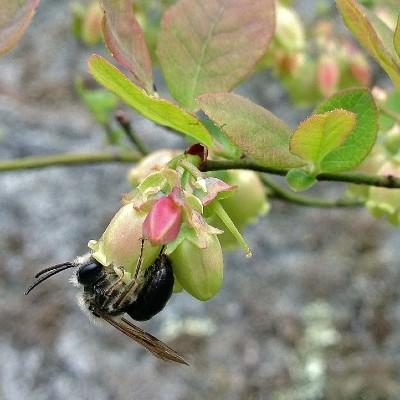
About hillside blueberry
Vaccinium pallidum (formerly Vaccinium vacillans)
Shrub
Heath Family
Maryland Distribution: dry woods and barrens
Height: 1.5-2 feet
Blooms: white to pink; April - May
Sun: full sun to shade
Soil: well-drained and acidic, any texture
Garden Use & Maintenance: Known by locals as low-bush blueberry, this shrub forms colonies that carpet the forest floor. It is useful for massing, pollinator gardens, edible landscaping, brilliant red fall color. For large natural areas fire should be considered as a maintenance option, but for the home garden simply weed out any competition. If shade becomes too deep, fruit production will stop, in which case you may wish to limb up trees or thin the canopy. Pick blueberries if desired, these are the wild blueberries you pay so much for at market, or leave them for the birds to savor.
Wildlife: The fruit is consumed by orioles, box turtles, and black bears. Flowers are pollinated by bumble bees and hummingbird moths. Lowbush blueberry is a host plant for certain chalcid wasps and several species of butterflles.

Hillside blueberry, fall color
Special thanks to Wikipedia contributor fritzflohrreynolds for the photo of bee and lowbush blueberry flowers taken along the C&O Canal.
